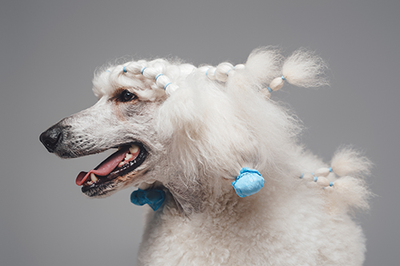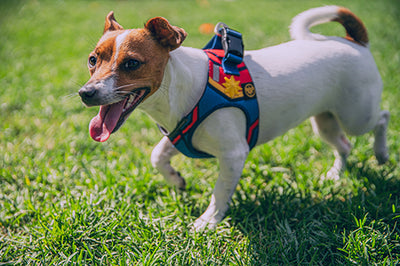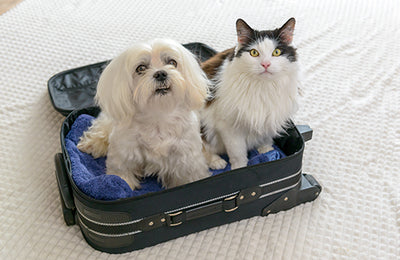News

Tips for a Healthier Coat: How to Keep Your Pets Looking Fab...

DOES YOUR CAT HAVE ALLERGIES?

TRIED AND TESTED: Litter

SAIL AWAY: The Liveaboard Life
Blog posts

Choosing the Right Choice: Harness vs Collar
When it comes to walking your dog, selecting the appropriate gear is essential for their comfort, safety, and overall well-being. The choice between a harness and a collar depends on various factors, including the specific needs of different dog breeds. By understanding the unique requirements of different breeds, you'll be better equipped to make an informed decision and provide an enjoyable walking experience for both you and your furry companion.
Harnesses offer several advantages, especially for specific breeds:
- Small and Toy Breeds: Chihuahuas, Yorkshire Terriers, and Shih Tzus, tend to have delicate necks and throats. Using a harness reduces strain on these sensitive areas, providing better control and minimizing the risk of injury during walks.
- Brachycephalic Breeds: Bulldogs & Pugs, for example, have shortened muzzles and respiratory challenges. A harness allows for even weight distribution, alleviating pressure on their throat and reducing breathing difficulties that can be exacerbated by pulling on a leash.
- Dogs Prone to Back or Spinal Issues: Certain breeds, such as Dachshunds and Basset Hounds, are predisposed to back or spinal problems. Using a harness provides added support and stability, reducing the risk of strain or injury to their delicate spine while on walks.
Collars are a suitable choice particularly for those with specific characteristics:
- Well-Trained and Calm Dogs: Breeds that are well-behaved, responsive to commands, and have excellent leash manners, such as Golden Retrievers, Labrador Retrievers, and Border Collies, can typically be walked comfortably with a leash. They require minimal additional control and benefit from the freedom of movement provided by a leash.
- Medium to Large Breeds: German Shepherds, Boxers, and Huskies, may find leashes to be sufficient during walks. These breeds generally have sufficient strength and responsiveness to walk comfortably without the need for additional support from a harness.
- Dogs with Good Leash Etiquette: Certain breeds, such as Standard Poodles, Australian Shepherds, and Cocker Spaniels, often exhibit good leash manners naturally. They walk calmly by their owner's side, without excessive pulling or tugging, making a leash an appropriate and convenient choice for their daily walks.
When choosing between a harness and a leash, consider the specific needs and characteristics of your dog's breed. Remember to assess your dog's size, health, walking behavior, and training goals to make the best decision for their comfort and safety. By selecting the right walking gear, you'll enhance your dog's walking experience, foster a stronger bond, and promote a healthier lifestyle for both you and your beloved pet.

Planning A Holiday? Ensure Your Pet’s Safety While You’re Away
Yes, we all need that well-deserved vacation. However, it can present challenges when you have some furry friends to leave behind, thus, it's essential to ensure the safety and well-being of our beloved pets before embarking on our travels. When the time comes to leave them at a boarding facility, thorough preparation becomes paramount. Let’s discuss some essential tips for preparing your pets and explore a variety of must-have products that can contribute to their comfort and happiness during their time away. By taking these steps, you can enjoy your vacation with peace of mind, knowing that your furry companions are well taken care of.
Research and Choose a Reputable Boarding Facility
The first step is to research and select a reputable boarding facility that aligns with your pet's needs. Look for facilities with positive reviews, clean and safe environments, knowledgeable staff, and individualized attention. Take the time to visit the facility in person, ask questions, and ensure you feel confident about entrusting your pet's care to them.
Ensure Vaccinations and Health Records are Up to Date
Most boarding facilities require pets to be up to date on vaccinations. Schedule a visit to your veterinarian to ensure your pet's vaccinations are current and obtain a copy of their health records. This will not only meet the boarding facility's requirements but also ensure your pet's health and well-being during their stay.
Pack Sufficient Food and Medications
Make sure you pack enough of your pet's regular food to last their entire stay at the boarding facility. Abrupt diet changes can upset their stomachs, so maintaining consistency is essential. Additionally, if your pet requires any medications, ensure you pack an adequate supply. Clearly label each medication and provide detailed instructions to the boarding facility staff. It is a good idea as well to leave your veterinarian’s contact details to the facility.
Comfort Items from Home
To help ease your pet's transition, pack familiar comfort items from home. Include their favorite toys, blankets, or bedding to create a sense of familiarity in the new environment. Having these items around can provide comfort, reduce anxiety, and make their stay more enjoyable.
Prepare Detailed Care Instructions
Provide the boarding facility with clear and detailed care instructions for your pet. Include information on feeding schedules, dietary restrictions, exercise routines, and any specific needs your pet may have. By communicating these details, you'll help the staff provide personalized care and maintain your pet's regular routine as closely as possible.
Must-Have Products for Your Pet's Boarding Stay
- Comfortable Travel Crate or Carrier: Invest in a sturdy and well-ventilated travel crate or carrier that meets the appropriate requirements. This is especially important if you're traveling by air. A proper crate or carrier will ensure your pet's safety and comfort during transportation and provide them with a secure space to relax while at the boarding facility.
- Pet-Safe Cleaning Supplies: Pack pet-safe cleaning supplies, such as disinfectant wipes or sprays specifically formulated for pets. These supplies can come in handy if you want to freshen up your pet's sleeping area or clean any accidents that may occur.
- Calming Products: If your pet experiences anxiety or stress, consider using calming products such as pheromone sprays, diffusers, or natural calming supplements. These products can create a soothing effect to animals.
- Interactive Toys and Treats: To keep your pet mentally stimulated during their stay, provide them with interactive toys or puzzle feeders. These engaging toys can help alleviate boredom and provide
Remember, a little extra preparation goes a long way in ensuring a stress-free experience for both you and your pets. So, plan ahead, gather the necessary supplies, and embark on your journey with confidence, knowing that your pets are in good hands while you enjoy your well-deserved vacation.

Tips for a Healthier Coat: How to Keep Your Pets Looking Fabulous


